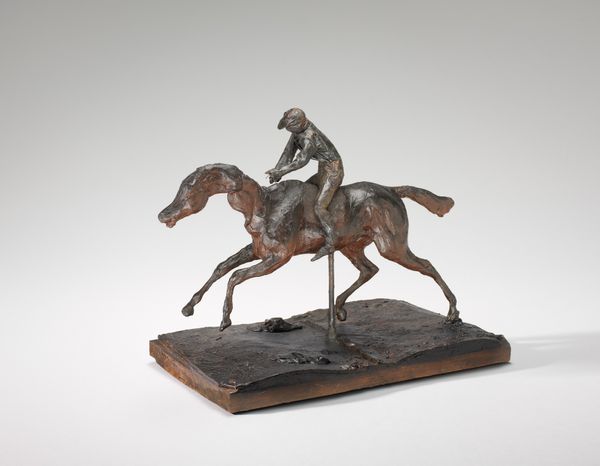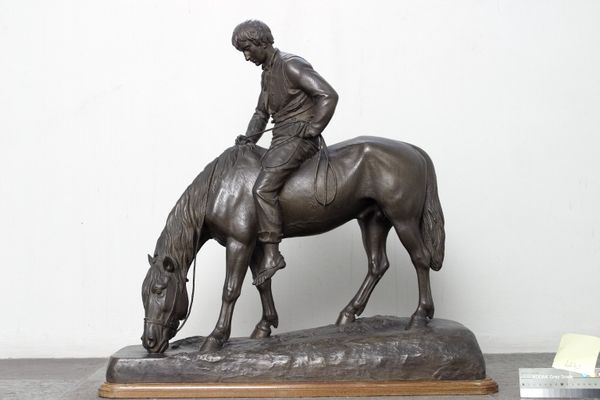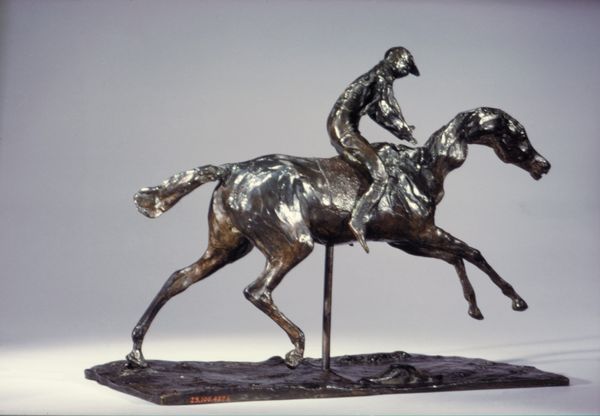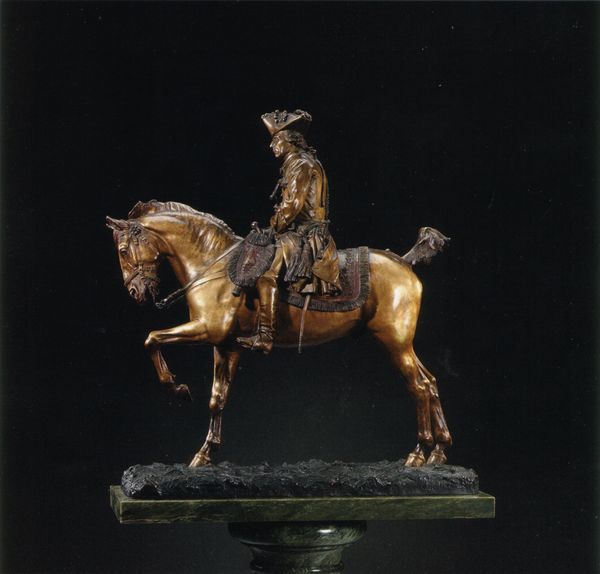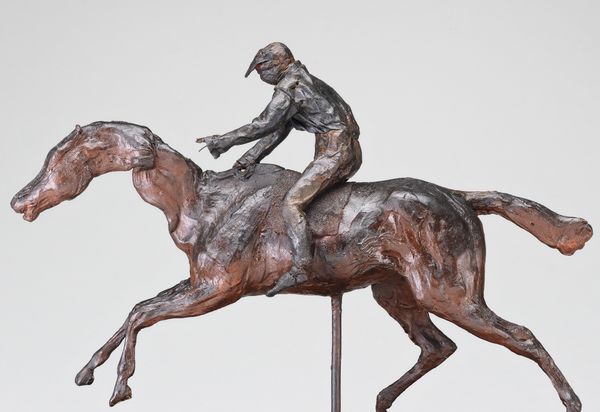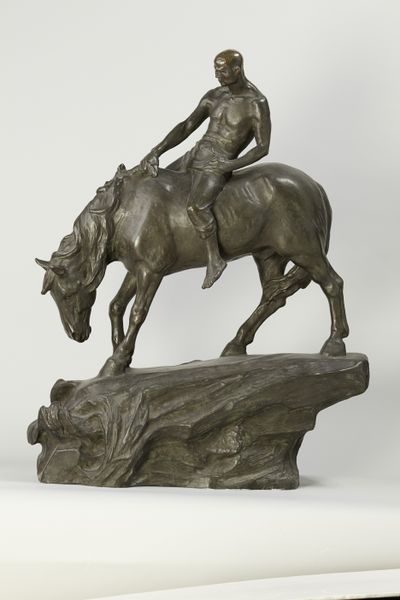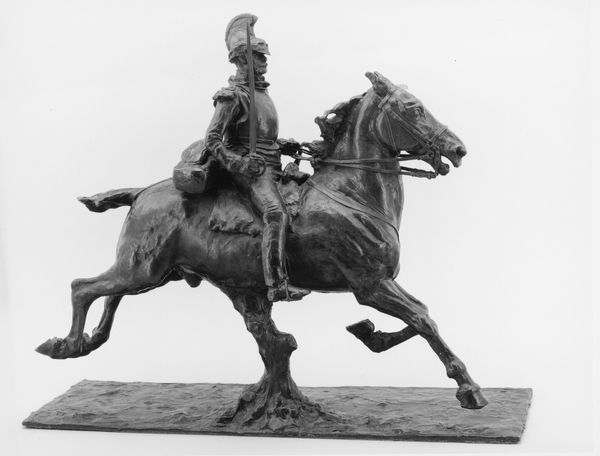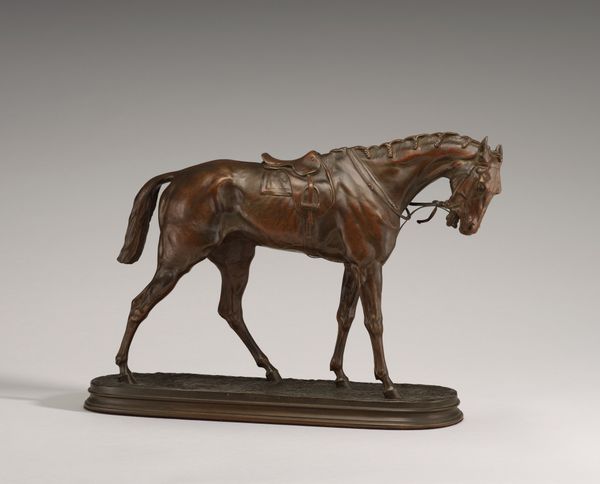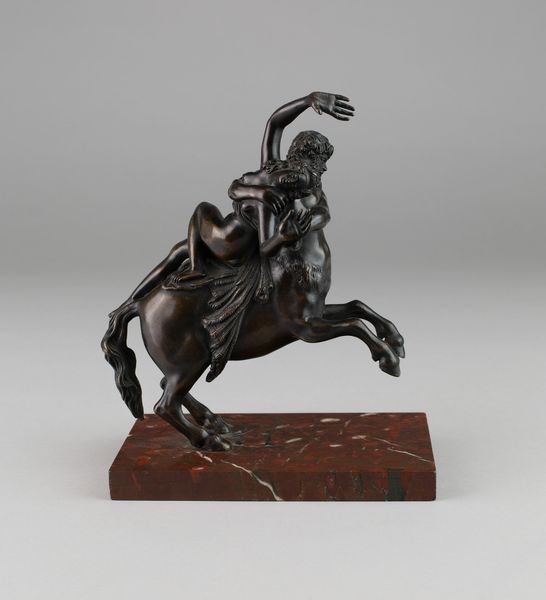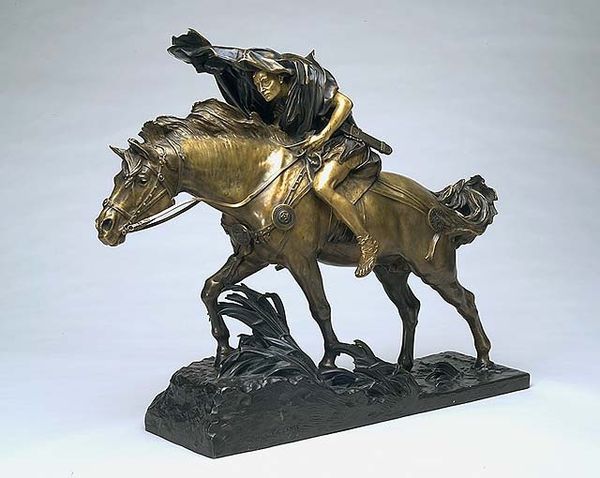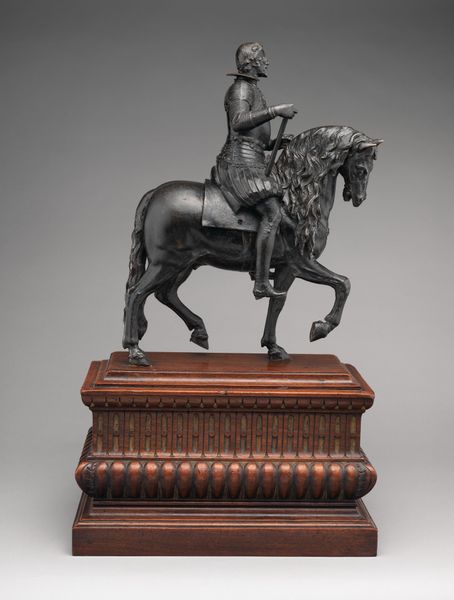
bronze, sculpture
#
sculpture
#
bronze
#
figuration
#
soldier
#
sculpture
#
horse
#
men
#
history-painting
#
realism
Dimensions: 19 7/8 x 31 x 11 1/2 in. (50.5 x 78.7 x 29.2 cm)
Copyright: Public Domain
Curator: What a dynamic piece! The bronze positively vibrates with the energy of two horses in full gallop. The movement feels caught in a single, breathless moment. Editor: Indeed. We are looking at Frederic Remington’s "The Wounded Bunkie," likely conceived around 1896, though casts continued to be made well into the early 20th century. Remington was deeply invested in capturing the spirit of the American West. Curator: And that spirit, I think, is deeply intertwined with symbols of survival. Observe how the figure of the wounded "bunkie", or comrade, is supported—a visual echo of earlier pietà imagery but set against the harsh realities of frontier life. This really showcases how he was playing into narratives of American fortitude at the time. Editor: Yes, the pathos is palpable. But it’s not merely sentimentality. Remington uses the horse as a potent symbol. Notice the straining muscles, the flared nostrils... the horse becomes an emblem of perseverance, of carrying burdens both literal and figurative. Even the bull skull adds to it. It suggests loss but also defiance – nature continues despite hardships. Curator: And in doing so, the statue tells a tale not just of camaraderie, but about the cultural perception of Western life. By highlighting the dangers and the necessity of masculine bonds, Remington reinforces that the Western experience necessitates communalism in the face of environmental adversity. These values played heavily in turn-of-the-century American expansionism. Editor: Absolutely, Remington taps into deep wells of cultural memory here. The visual language speaks of heroism, resilience, even a stoic acceptance of fate. It transforms a personal moment of injury into an archetype of the American character itself. This work immortalizes themes that have continued to be relevant to our culture even now. Curator: Well, its continued presence in institutions like the Met suggests the narrative resonated, doesn't it? Thanks for sharing your interpretations of its lasting power! Editor: My pleasure. Thinking about it, "The Wounded Bunkie" prompts me to wonder: how do such dramatic works of art play a role in shaping our ideas about both the past, and present?
Comments
No comments
Be the first to comment and join the conversation on the ultimate creative platform.
